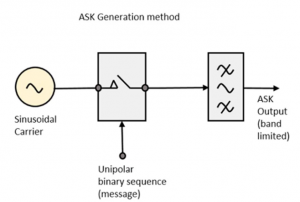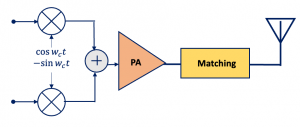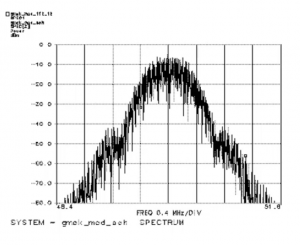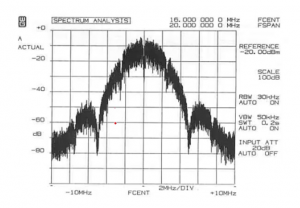
Understanding Direct Conversion Transmitters
Introduction to Direct Conversion Transmitter
Similar to direct conversion receivers we have direct conversion transmitters. When we are receiving RF modulated signal we are trying to translate it to baseband frequency we call it direct down conversion. Similarly, we have direct conversion in the transmitter which is the reverse, we are trying to upconvert the data from baseband to RF frequency and we call this a direct conversion transmitter.
When we refer to direct conversion it does not means we always use single or quadrature upconversion. It depends on the modulation. This blog will focus on quadrature upconversion as it’s commonly used nowadays like QPSK/GMSK, so most of the time we don’t have a single carrier but also understand it’s not always quadrature upconversion.
In the below image, you can see binary sequences, and their baseband data, which means its baseband or zero IF(low frequency). The switch here is used to switch the sinusoidal carrier so at the output we will have carrier or zero. If we have a carrier then it’s 1 and no data means 0, this is ASK modulation. Basically, it’s a direct conversion, we are converting from zero IF baseband to RF frequency because this data has RF frequency. The idea is the same, we will focus on quadrature.


Single or quadrature up-converter modulates the baseband signal. The structure represents for example QPSK direct conversion transmitter. A structure of a transmitter depends on the modulation, if you have a QPSK or GMSK modulation we might have a quadrature and for ASK/FSK modulation we have just had one carrier. Then like other structures, we have a power amplifier that amplifies the signal before transmitting. Then we have a matching circuit to have maximum power delivery to the antenna and filter out unwanted signal components plus providing optimum load impedance for PA.
Can you use only one mixer for the transmitter? Yes, it depends on the modulation.
In ASK modulation we can have a direct conversion from zero IF to RF frequency. Let’s show an example of the direct conversion transmitter for GMSK modulation. Modulation in detail is not discussed in this blog post. GMSK is a digital modulation. Just know that for this example the output of this modulation should be something like as below. The signals are produced by the signal processor. It’s different for other modulations but the concept is the same. The spectrum of GMSK is also shown here for reference. The structure shown below can be used to produce this.


In the structure you can see we have baseband signals (BB) and then have the mixers to do the upconversion, then we have RF that goes to PA. This is a direct conversion transmitter, we are translating data from baseband to RF. This above structure shows the GMSK modulation of two signals from the digital processor and we do the modulation to get the output.
Example of QPSK Transmitter Structure (Direct Conversion)


Another example structure shown below is a QPSK transmitter. We are using a quadrature structure but we don’t need to always have a quadrature structure. In this structure, we are using quadrature upconversion with using two mixers and this is a direct conversion architecture for the QPSK transmitter. We are upconverting the data from the baseband, this data is fed by the serial to parallel converter working at a low frequency. We are focusing on the architecture of the transmitter here. So in direct conversion, we are converting data from baseband to RF and in output, we have something like this as shown in the above diagram. For reference, we have also shown the spectrum for the QPSK transmitter.
Glossary of terms:
ASK – Amplitude-shift keying
FSK – Frequency-shift keying
QPSK – Quadrature Phase Shift Keying
PSK – Phase-shift keying
GMSK – Gaussian minimum-shift keying




